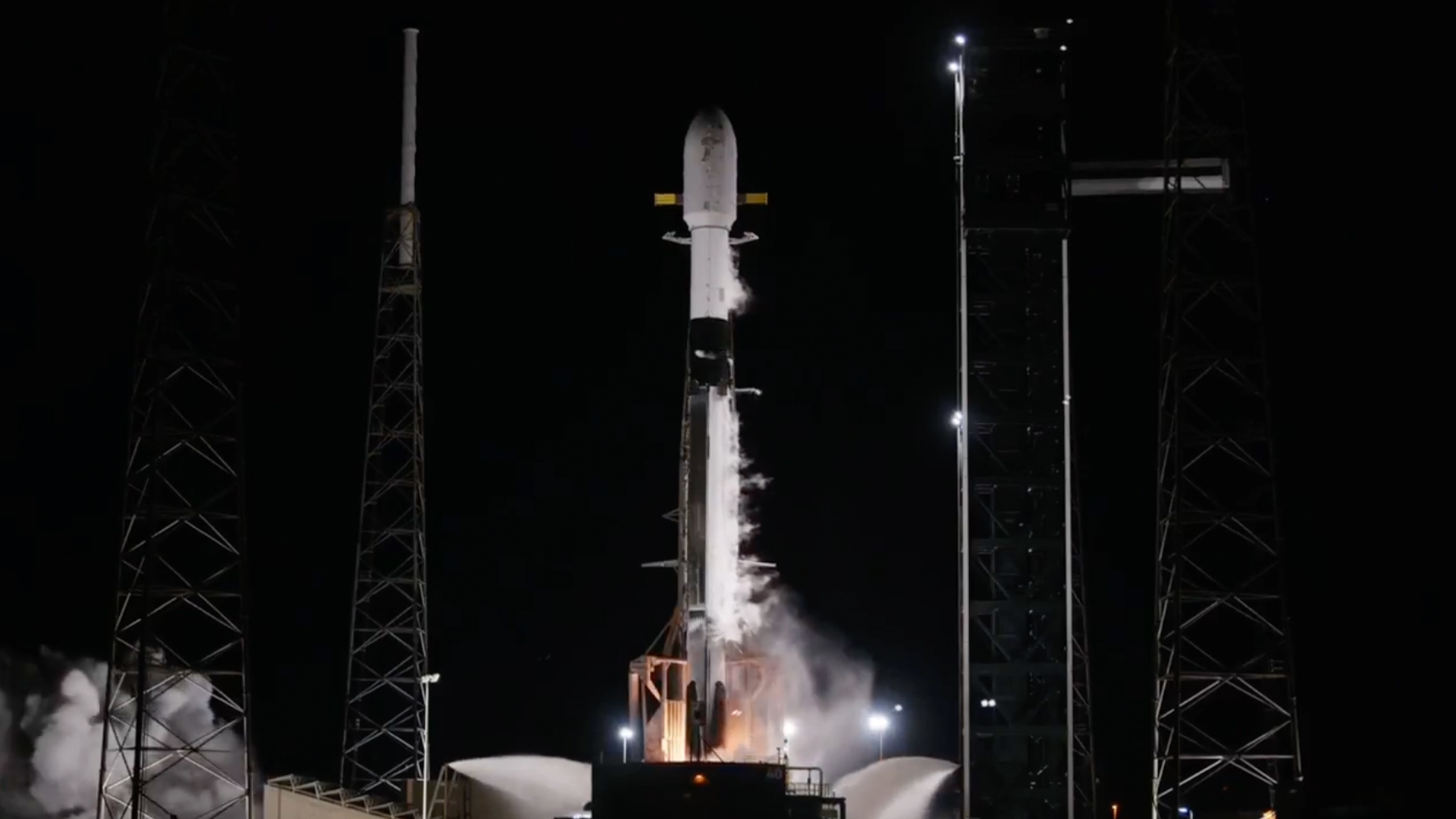'Star Wars: The Empire Strikes Back' at 45: Stop-motion master Phil Tippett on creating the iconic Battle of Hoth (exclusive)
The Oscar-winning SFX guru talks turkey sandwiches, space lizards, and making the awesome Battle of Hoth scene for "Star Wars: The Empire Strikes Back".
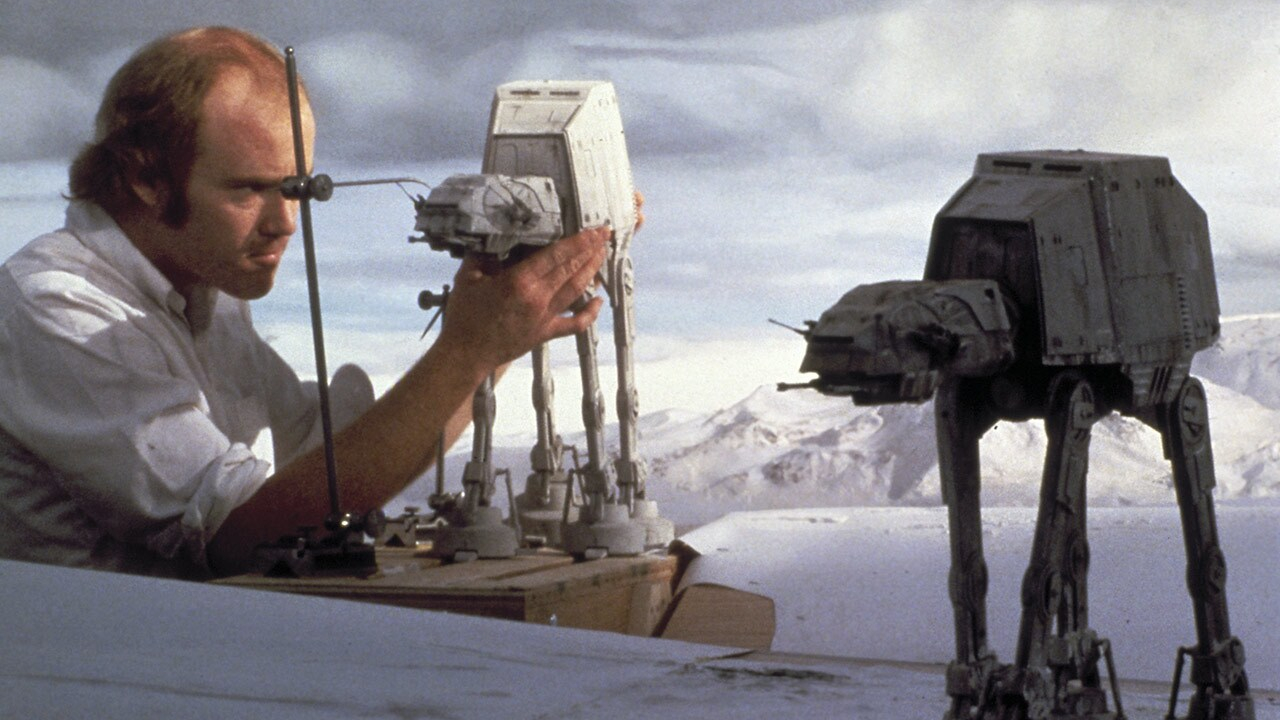
Today marks the 45th anniversary of "Star Wars: The Empire Strikes Back," which was released in theaters by 20th Century Fox on May 21, 1980, and has been aptly christened by adoring fans and sagacious critics as one of the greatest sci-fi sequels ever made.
Directed by Irvin Kershner and executive produced by George Lucas and Gary Kurtz, "The Empire Strikes Back" has achieved legendary Hollywood status for its potent entertainment value, compelling drama, exhilaration John Williams musical score, and ingenious special effects that together push the Skywalker Saga into darker territory and advance the sprawling space opera in myriad ways.
Two-time Academy Award-winning visual effects wizard Phil Tippett ("Return of the Jedi," "Jurassic Park," "Starship Troopers") and his talented ILM team shot the movie's pivotal stop-motion sequences in Lucasfilm's warehouse headquarters in San Rafael, California. These iconic scenes transported audiences to the icy world of Hoth for the rebel base opening's camel-like tauntauns and menacing Imperial AT-AT Walkers.
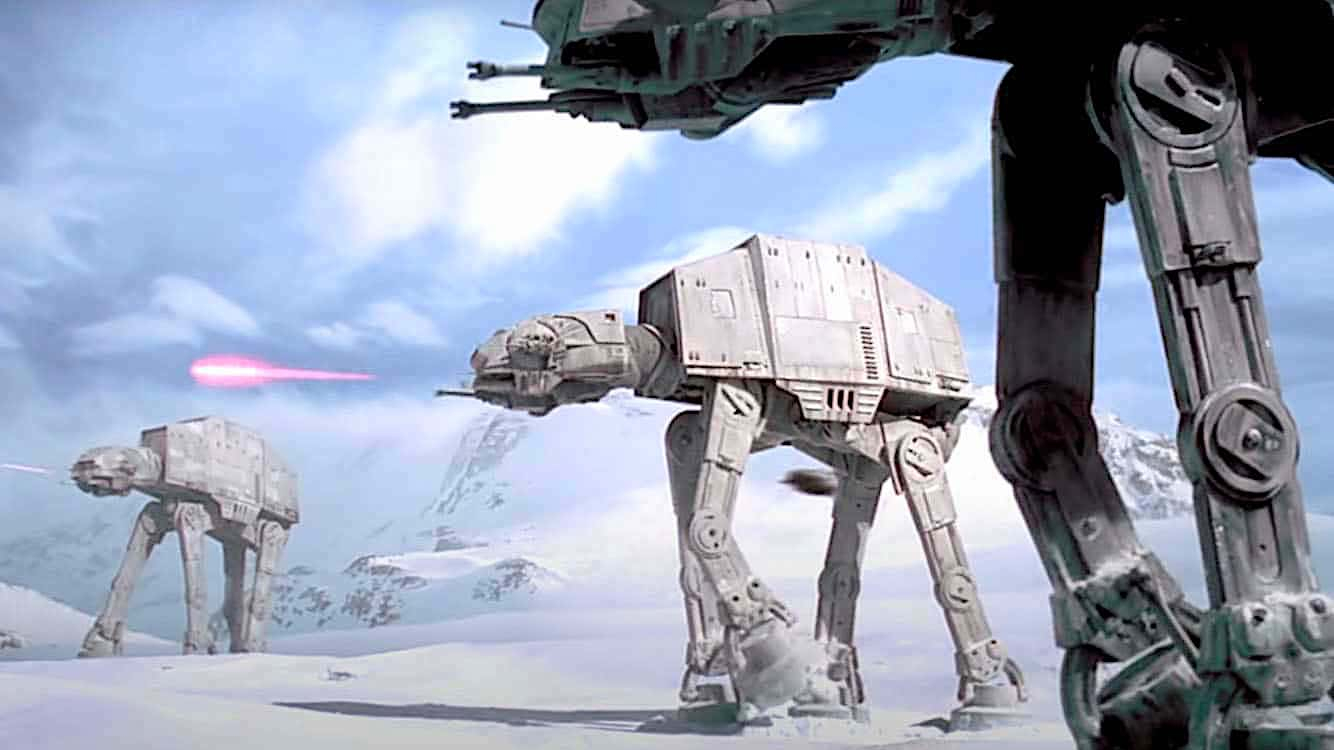
Tippett, along with John Berg, Doug Beswick, and Dennis Muren braved the hazards of long, tedious hours popping up through set trap doors with the added nuisance of fake snow comprised of baking soda and micro glass bubbles to capture some of "The Empire Strikes Back's" many memorable moments.
We had the chance to chat to Tippett recently to talk about his work on the sci-fi icon ahead of celebrating its 45th anniversary.
Space.com: What was your daily routine like working in ILM's new Northern California home while shooting the Battle of Hoth's stop-motion scenes?
Phil Tippett: Mine started with lots of coffee — intravenous coffee. And we'd usually have dailies in the morning. After dailies, Dennis [Muren} and Joe Johnston and I would usually go over to a restaurant right across the parking lot called Foodles. They had a great turkey on sourdough with cranberry sauce thing. So that's kind of how the day started. And then we'd get into it. We had reel-to-reel tapes, and we played a lot of music. I had English friends, my wife's English, and we had a tape of intensified original Ska that we played frequently. And Brian Eno, lots of eclectic stuff.
Breaking space news, the latest updates on rocket launches, skywatching events and more!
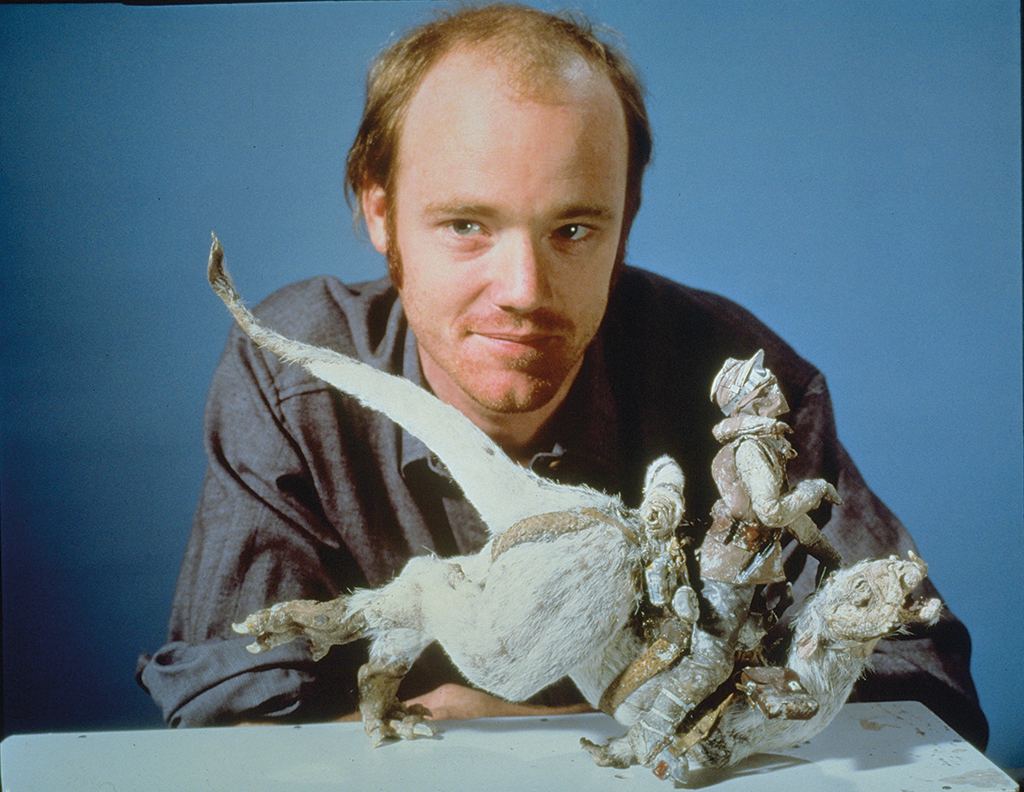
What were the design origins of Hoth’s trusty rebel-ridden tauntauns?
PT: For the tauntaun, I spent a few days just doing maybe 20 sketches, half a dozen sketches, I don't remember, they were very loose, and sent them to George, and he chose one and asked to see a three-dimensional maquette. So I sculpted a little tauntaun and sent it to him, and he bought it and said, "Let's go with that".
The thing about the taunton was it initially indicated in the script that it was a snow lizard. And I think Joe [Johnston] had done a couple of snow lizard drawings. I was super into dinosaurs, and the idea of a snow lizard was like, "I don't know about that." I just went in that direction. The design George ultimately picked was more of a mammalian creature that had attributes of terrestrial animals that you could relate to. Sort of like a camel's face or ram’s horns, so that there was an immediate, "Oh, I kind of know what that thing is." It was the equivalent of a horse in a movie. The movie is not about the horse. The movie is about the rider, and what he's doing and where he's going. So you want the thing to take a back seat and play its part in the story.
Was there any discussion of the Wampa possibly being a stop motion creature?
PT: No, I mean the close-up inserts that they did in Norway just didn't look so good. Even the performance didn't feel like what it needed to be. So I went to George, asked him if I could make something that looked better. And he said, "yeah, if you could do it really quick." So I made a little hand puppet in a couple of days. That felt much more threatening. It was just the mouth coming up.

Were there any improvisation scenes of the tauntauns or Walkers that never made it into the final cut?
PT: No, we pretty much got every take that we attempted. We didn't mess anything up. That was what we did back in the day with stop motion. It was very rare that we did second takes. The scene where the tauntaun runs up on the rise, I was just getting to know the puppet, and the first take I thought was terrible, and George liked it. So I'm pleading with him to let me do another take, and he let me. We really were in Ray Harryhausen mode. You shoot the shot, and that's the performance.
Did you feel any different pressures or challenges making the larger budget sequel than for the original "Star Wars?"
PT: I was only involved in "Star Wars" at the very end. That show, because of what they needed to do with inventing the new motion control technology and getting all of this stuff to work, and making this movie that nobody could understand except for George, was its own set of problems. And by the time we all graduated to "Empire," we knew the universe and understood more. The technology was working, so everything moved a lot smoother. There really wasn't any tremendous amount of anxiety. The big thing was with the walkers, the way it was handled.
A lot of the backgrounds for the Walkers were shot in Norway under extreme whiteout conditions, so you couldn't see hardly anything. There was a white ground and a white sky. So Dennis was able to hire this kid, Michael Pangrazio, to do painted backings. And that allowed us to do what Dennis wanted. So those Pangrazio matte paintings, the foreground miniatures, and the tauntauns allowed us to do a lot more moving shots.
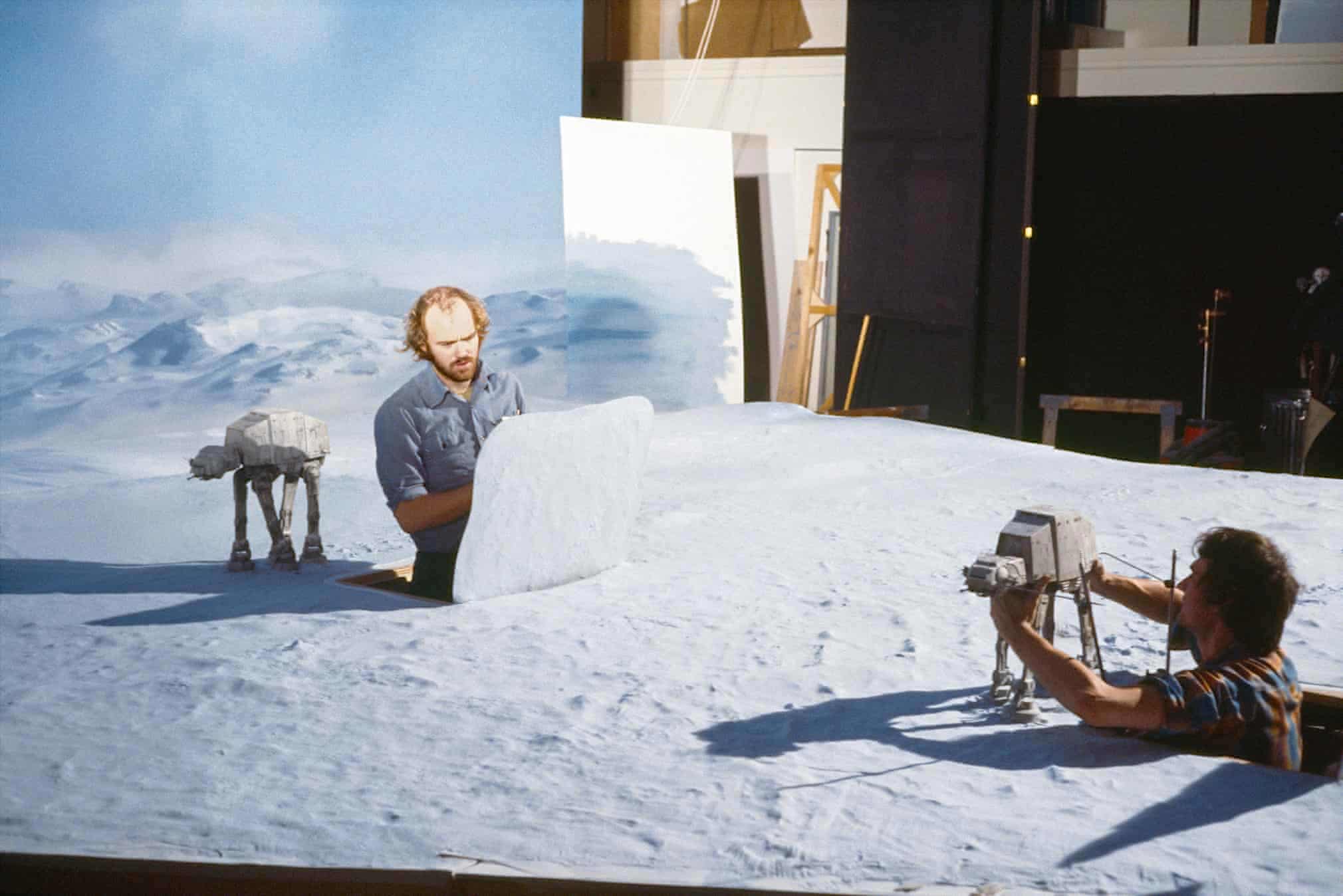
How were you able to inject personality into the Empire's clumsy war machines?
PT: I recall one instance where there was a two-shot, I think of the Walkers' heads and they’re moving forward. Without even thinking, I started to move one head in a little bit. I just wasn't paying attention. And Dennis was behind the camera going, "Oh, that looks really interesting because it looked like a threatening move, like it was looking at you." Little things like that. The other thing I thought was cool and what really stands out today, is the artificiality of those scenes. Those shots, in no way are they real. They're just really well-designed graphic shots.
It's like the difference between a good meal and a sumptuous meal. There's a magic behind it that you don't get from reality. Whatever way you want to slice it, miniatures just look better, period. Depending upon the level of skill that goes into them, it's just something that you can immediately tell is just more tactile or aesthetically pleasing.
Star Wars: The Empire Strikes Back turns 45 years old today. If you want to relive the magic of the battle of Hoth and see Tippet's work in all its glory, you can watch Star Wars: The Empire Strikes Back on Disney+
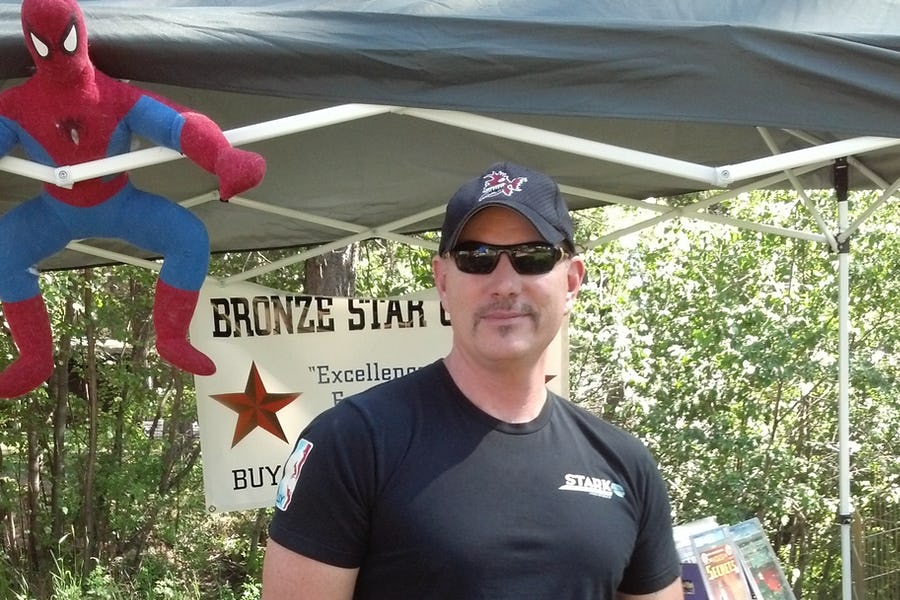
Jeff Spry is an award-winning screenwriter and veteran freelance journalist covering TV, movies, video games, books, and comics. His work has appeared at SYFY Wire, Inverse, Collider, Bleeding Cool and elsewhere. Jeff lives in beautiful Bend, Oregon amid the ponderosa pines, classic muscle cars, a crypt of collector horror comics, and two loyal English Setters.
You must confirm your public display name before commenting
Please logout and then login again, you will then be prompted to enter your display name.
